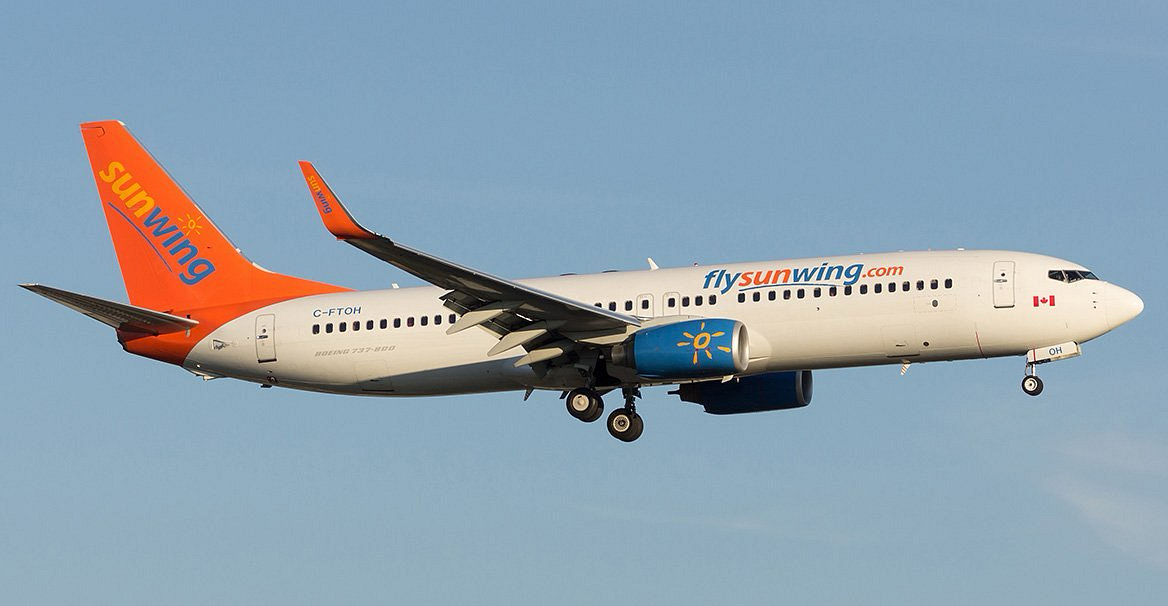Overview
• Operator: Sunwing Airlines
• Aircraft Model: Boeing 737-800
• Registration: OK-TSR
• Flight Number: WG-720
• Route: Toronto Pearson (YYZ) to Montego Bay (MBJ)
• Date: 1 February 2025
• Occupants: Not specified
• Casualties: None reported
• Nature of Incident: Tail scrape during takeoff, requiring return for inspection
Incident Summary
A Sunwing Boeing 737-800, operating flight WG-720 from Toronto to Montego Bay, experienced a tail strike during departure from runway 06L at Toronto Pearson International Airport (YYZ).
Upon detecting the tail scrape, the crew stopped the climb at 6,000 feet and decided to return to Toronto as a precautionary measure. The aircraft performed a safe overweight landing on runway 05 approximately 20 minutes after departure.
After landing, maintenance inspected the tail skid assembly and found minor scraping, which remained within acceptable limits. An overweight landing inspection was completed, and the aircraft was cleared to return to service.
The flight departed again approximately 3 hours later and successfully reached Montego Bay with a delay of about 3.5 hours.
Sequence of Events
Pre-incident Conditions:
• The aircraft departed from runway 06L, with no immediate abnormalities reported before takeoff.
• Tail strikes typically occur due to:
• Excessive pitch angle on rotation.
• Misloading or incorrect weight distribution.
• Abrupt rotation during takeoff.
Takeoff & Tail Strike Occurrence:
• During initial climb, the crew identified the tail strike and reported it to ATC.
• The climb was stopped at 6,000 feet, and the decision was made to return to Toronto for inspection.
Landing & Emergency Response:
• The aircraft conducted a safe overweight landing on runway 05.
• Maintenance crews inspected the tail skid and fuselage, confirming only minor damage to the tail skid assembly, which remained within operational limits.
• The aircraft underwent an overweight landing inspection and was cleared for continued service.
Flight Continuation:
• The aircraft departed again after approximately 3 hours on the ground.
• It successfully arrived in Montego Bay with a total delay of 3.5 hours.
Investigation & Initial Findings
• The Canadian Transportation Safety Board (TSB) confirmed that the tail skid assembly sustained minor scraping but remained within operational limits.
• Contributing factors to the tail scrape could include:
• Rotation technique—possible excessive nose-up input during takeoff.
• Aircraft weight and balance configuration—incorrect loading or trim setting.
• Runway conditions or environmental factors—wind conditions affecting lift-off dynamics.
• The overweight landing was handled appropriately, and no further damage was found beyond minor tail skid scraping.
Analysis & Safety Recommendations
• Flight crew training and awareness should emphasize proper rotation techniques to prevent excessive pitch angles.
• Weight and balance calculations should be closely monitored to ensure optimal center of gravity (CG) positioning.
• Tail strike prevention training should include simulator scenarios to help pilots recognize and respond to potential tail strike risks.
• Airlines should ensure tail skid assemblies are routinely inspected to detect early signs of wear or stress from past incidents.
Disclaimer
“This report is based on available information as of 24 February 2025. While every effort has been made to ensure accuracy, the completeness of the details cannot be guaranteed. If you are the rightful owner of any referenced materials and wish them removed, please email takedown@cockpitking.com.”
